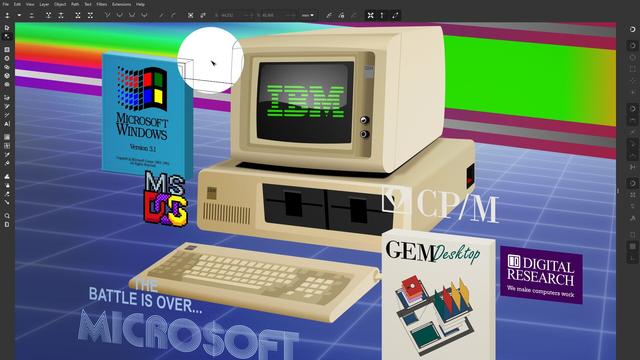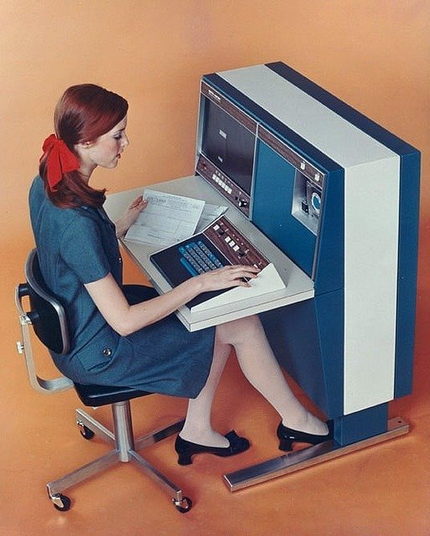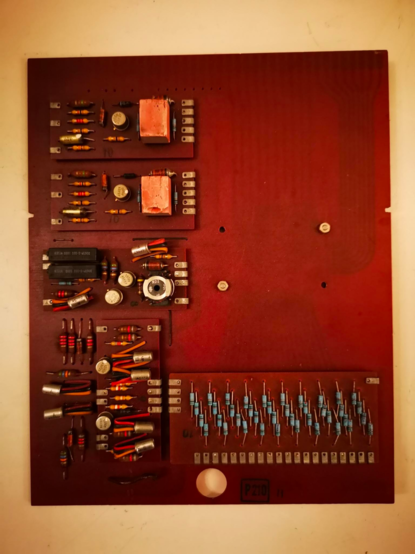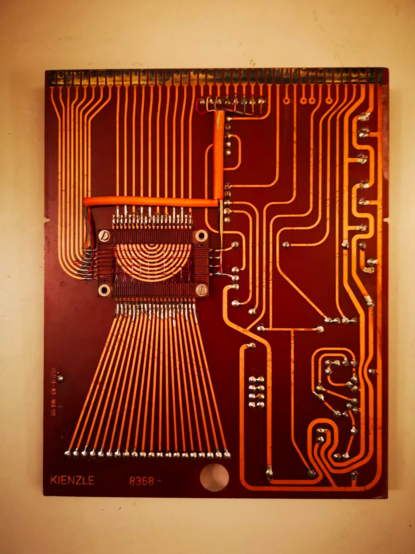#MiniComputers
Of course the #BigBlue #corporation with #Sstem360 #mainframe #computers ignored niche markets like #homecomputers for most of the 1970s. As #marketleaders they did #LOL hard about #hobbyists, especially since #DEC challenged them hard with better #minicomputers.
Simultaneously, IBM built a team of young talented engineers in Boca Raton, Florida, to develop a #microcomputer in secrecy, and fast! Somehow, directors #WilliamLowe & #PhilipDonEstridge made a decision under pressure that turned out to be great for the entire market, not their employer exclusively.
Considering the time (and #$hits) given, it's only logical that they relied heavily on free available components instead of own #chipdesigns. But somehow, the lack of #IP passed their lawyers and IP team before #InternationalBusinessMachines went public.
1981, August 12th, the IBM #PC5150 changed the world of #PersonalComputers, by accident (for the better of humanity).
#retrocomputing #gaming #hardware #illustration #legendary #IT #vintage #punchcard #computer #art #lightpen #FOSS #SVG #Inkscape
На зображенні видно сцену, яка виглядає як знімок із рекламної або демонстраційної фотосесії для комп'ютерної техніки минулого. Одяг, поза, освітлення та загальна композиція виглядають стилізовано, що є типовим для рекламних знімків тієї епохи (наприклад, 60-70-х років).
Подібні фото зазвичай створювалися для демонстрації нової техніки у позитивному та естетичному ключі. Швидше за все, це постановочне фото, призначене для презентації або реклами комп'ютерів.
На фото зображена міні-комп'ютерна система або термінал, типова для 1960-1970-х років. Такі пристрої часто використовувалися в наукових, інженерних і бізнесових цілях для обробки даних або управління процесами.
Схоже на моделі, які виробляли компанії **IBM**, **DEC (Digital Equipment Corporation)** або схожі виробники, наприклад:
**DEC PDP (Programmed Data Processor)** — серія міні-комп'ютерів, популярна в той період.
**IBM 1130** — комп'ютер, орієнтований на технічні й наукові завдання.
**Honeywell 316** або інші схожі моделі — також використовувалися в бізнесі й автоматизації.
Характерні риси:
Консоль для введення даних (з клавіатурою та кнопками).
Вбудований екран для відображення текстової інформації (можливо, вивід через телетайп або CRT).
Дизайн корпусу — функціональний, але оформлений у стилі технічного модерну тієї епохи.
Бібліографія:
**Ceruzzi, Paul E.** *A History of Modern Computing*. MIT Press, 1998.
Докладний огляд еволюції комп'ютерної техніки, включаючи розвиток міні-комп'ютерів.
**Edwards, Paul N.** *The Closed World: Computers and the Politics of Discourse in Cold War America*. MIT Press, 1996.
Розповідає про застосування комп'ютерів у 1960-1970-х роках.
**Campbell-Kelly, Martin, et al.** *Computer: A History of the Information Machine*. Basic Books, 2004.
Описує розвиток техніки від перших машин до міні-комп'ютерів.
**Bell, C. Gordon** *The Evolution of Digital Computers*. DEC Tech Journal, 1978.
Історія розробки DEC PDP і міні-комп'ютерів.
Гештеги:
#МініКомп'ютери #ІсторіяТехнологій #DEC #IBM #Техніка60х #ОбчислювальнаТехніка #РетроКомп'ютери
This image depicts a retro mini-computer or terminal, typical of the 1960s-1970s. Such systems were used in scientific, engineering, and business applications for data processing or automation. It resembles models by companies like DEC (e.g., PDP series), IBM (e.g., IBM 1130), or Honeywell. The setup includes a console with a keyboard, buttons, and possibly a CRT display for text output. The stylized composition suggests this is a promotional or staged photo showcasing the technology of that era.
#RetroComputers #MiniComputers #DEC #IBM #VintageTech #1960sTech
#nixos Anyone know of a decent definitive testing list for #nixos on #minicomputers for non-gaming applicatoins
Ignoring the electronics inside, is it generally accepted that DEC's PDP line is the most photogenic of the 70s minicomputers?
https://en.m.wikipedia.org/wiki/Minicomputer#/media/File%3ASix_Minicomputers_from_Digital_Equipment_Corporation_(DEC)_from_1957_to_production_end_in_1979_-_PDP-1%2C_PDP-7%2C_PDP-8%2C_PDP-8-E%2C_PDP-11-70%2C_PDP-15.jpg
#minicomputers #retrocomputers #pdp
Me topé con esta historia y la verdad que disfrute mucho leyéndola, así que aquí os la dejo
#Vector #computers #ComputerHistory #PC #MiniComputers
https://every.to/the-crazy-ones/the-woman-that-tech-history-forgot
meet my new litton minicomputer (it has drum memory)!
It is good to have a dad that has been a true #bookworm - this evenings volume: #minicomputers for Engineers and Scientists by Granino A. Korn, 1973, McGraw-Hill, Inc.
Special thanks to Dave at LSSM - He has a KDJ11-B mainboard for my PDP 11/73! We're making arrangements to get it here soon, at which point Project Barn Find PDP 11 will (hopefully!) come to life!
A RAM module (magnetic cores) of a German "Kienzle Fakturier-Maschine" (rb. 60s) from the Collektion of horniger/Berlin:
The #umdpdp12 is serial number 435. According to this 1978 document from #DEC, the total number of #pdp12 #minicomputers ever produced should be 765: https://archive.org/details/bitsavers_decBooksDE78_60225737/page/n93/mode/2up
'#HELLORLD!' - When your #BuggyCode is so bad it's funny.
https://github-wiki-see.page/m/Nakazoto/CenturionComputer/wiki/Hellorld%21
#RetroComputing #Retro #Computing #MiniSystem #MiniSystems #MiniComputer #MiniComputers #Wang #WangWriter #SWTPC #Nakazoto #Centurion #CenturionComputer #Cactus #SEL810A #BBZ80 #PIX80 #PJ5 #Zolatron64 #RC2014Pro #RC2014 #Magi #MagiB #MagiB2015 #SegaSG1000 #6502 #Z80 #6800 #RISC #RISC8x8 #8Bit
It's 2am and I should be asleep but I had a DEC PDP-3 manual to finish. #minicomputers
Testing my #virtual DEC #minicomputers. PDP-8E with OS8, the PDP-11/20 with papertape #BASIC, the PDP-11/40 with RT11 and Unix v5 PDP-11/70 with #BSD 2.11 and RSX-11M




